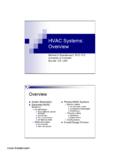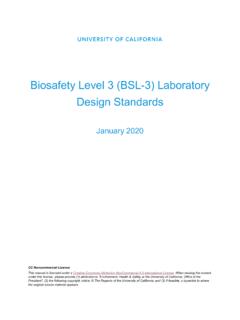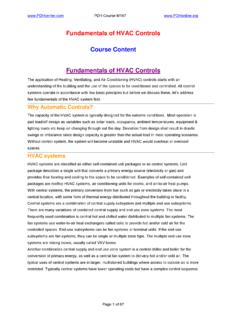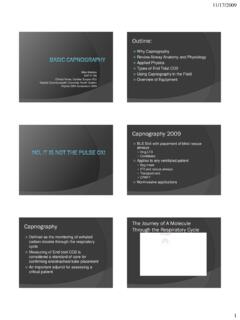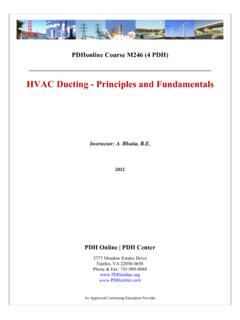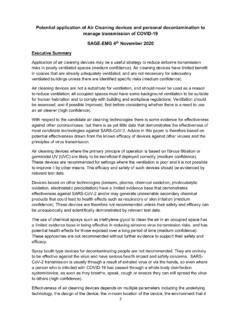Transcription of A320 LIMITATIONS - THE AIRLINE PILOTS
1 a320 LIMITATIONS . Last Updated 26th Oct 2020. AIRCRAFT GENERAL ENGINES. LOAD ACCELERATION LIMITS FLIGHT CONTROLS. ENVIRONMENT LIMITS FUEL. WEIGHT LIMITS ICE AND RAIN PROTECTION. SPEED LIMITS LANDING GEAR. AIR BLEED/COND/PRESS/VENT OXYGEN. AUTOFLIGHT GPWS. APU NAVIGATION. DISCLAIMER. AIRCRAFT GENERAL. FLIGHT MANEUVERING LOAD ACCELERATION LIMITS. Clean configuration: -1 g to + g Other: 0 g to +2 g ENVIRONMENT LIMITS. Runway slope (mean): 2 %. Runway altitude: 9 200 ft Nominal runway width: 148 feet Minimal runway width for AP-BLU, BLV, BLW: 98 feet Maximum demonstrated crosswind (takeoff and landing): 38 knots (gust included). Maximum tailwind for Takeoff BLY & BLZ = 15 knots, Others 10 knots. Maximum tailwind for Landing BLY & BLZ = 15 knots, Others 10 knots. For landing with a tailwind greater than 10 knots, use FLAPS FULL only. Maximum tailwind for Automatic Landing and Rollout = 10 knots. Maximum wind for passenger door operation is 65 kt. Maximum wind for FWD and AFT cargo door operation is 40 knots (or 50 knots, if the aircraft nose is into the wind, or if the FWD and AFT cargo doors are on the leeward side).
2 The FWD and AFT cargo doors must be closed before the wind speed exceeds 65 kt. WEIGHT LIMITATIONS . MSN 21 MSN 22 MSN 29 MSN 27 MSN 30 Approx. values to Weight Limits (Kgs). BLB BLC BLD BLY BLZ BLU BLV BLW BLA BLS BLT keep in mind Max Taxi 77,400 75,900 / 73,900 77,400 / 75,900 / 73,900 400 above MTOW. MTOW (brake release) 77,000 75,500 / 73,500 77,000 / 75,500 / 73,500 75 tons MLW 64,500 66,000 66,000 65 tons MZFW 61,000 62,500 62,500 60 tons Min Weight 37,230 37,230 37,230 37 tons In exceptional cases (in flight turn back or diversion), an immediate landing at weight above maximum landing weight is permitted, provided the pilot follows the overweight landing procedure. For dual or multiple max weights, a/c placard reflects the current limit. SPEED LIMITS. MINIMUM CONTROL SPEEDS. VMCL 108 Knots for BLY and BLZ and 113 Knots for others. VMCA 110 Knots IAS at Sea Level, decreasing with increase in altitude. VMCG 111 Knots IAS at Sea Level with CONF 1+F, decreasing with increase in altitude and flap setting.
3 For AP-BLY and AP-BLZ, same as above except the speed is 105 instead of 110 for VMCA and 106 instead of 111 for VMCG. So as a rule of thumb 115 KNOTS IS THE RED LINE for all models and for all minimum control speeds. For exact values see the table given in FCOM LIMITATIONS LIM-AG-SPD. MAXIMUM FLAPS / SLATS SPEEDS. GEAR DOWN SPEEDS. VLE 280 / VLO Extension 250 / VLO Retraction 220 / TYRE SPEED: Maximum Ground Speed 195 Knots WIPERS IN USE: Max Speed 230 Knots (applicable when the wipers are sweeping). COCKPIT WINDOW OPEN: Max Speed 200 Knots. TAXI SPEED: If takeoff weight > 76,000 kg Do not exceed a taxi speed of 20 knots during a turn. AIR BLEED, CONDITIONING, PRESSURIZATION AND VENTILATION. With passengers on board, it is not recommended to exceed 20 min without air conditioning supply. APU WITH HP GROUND UNIT. Do not use HP ground unit when APU supplies bleed air to avoid bleed system damage. AIR-CONDITIONING WITH LP GROUND UNIT. Do not use conditioned air simultaneously from packs and LP ground unit.
4 AVIONICS VENTILATION. During ground operations, limit the aircraft electric power supply with avionics ventilation system in normal configuration as follows: OAT = 49 C No Limitation. Above that just go home or open FCOM LIM AIR (For 55 C 2 hours, 60 C 1 hour & 64 C hour). CABIN PRESSURE. Maximum positive differential pressure: PSI. Maximum negative differential pressure: -1 PSI. Safety relief valve setting: PSI. RAM AIR INLET. Open if Differential Pressure < 1psi. AUTOFLIGHT. AUTOPILOT FUNCTION. Minimum values for use of autopilot: Takeoff with SRS mode: 100 feet AGL and at least 5 seconds after liftoff. ILS CAT I: 160 feet AGL. ILS CAT II or CAT III: 0 ft AGL. In approach with FINAL APP, V/S or FPA mode: 250 feet AGL. PAR approach (Precision Approach Radar): 250 ft AGL. Circling Approach: 500 feet AGL for CAT C and 600 feet AGL for CAT D. After Manual Go-around: 100 ft AGL. All other phases: 500 ft AGL. (The AP or FD in OP DES or DES mode can be used in approach.)
5 However, its use is only permitted if the FCU selected altitude is set to, or above, the higher of the two: MDA/MDH or 500 ft AGL). Note: So basically 100 for takeoff and go-around, 160 for Precision approaches, 250 for non-precision approaches and 500 otherwise. FLIGHT MANAGEMENT FUNCTION. DEGRADED SITUATION. If GPS primary LOST is displayed, the navigation accuracy remains sufficient for RNP operations provided that, the RNP value is checked or entered on the MCDU and HIGH ACCURACY is displayed. PREREQUISTES FOR USE OF NAV MODE AT TAKEOFF. GPS primary available FMGS Takeoff Updating Checked PREREQUISTES FOR USE OF NAV MODE IN TERMINAL AREA. GPS primary is available, or HIGH Accuracy is displayed, and the appropriate RNP is checked or entered on the MCDU, or FMS navigation is cross-checked with NAVAID Raw Data APPROACH BASED ON RADIO NAVAIDS. A NAVAIDS approach performed in NAV, APP NAV or FINAL APP, with AP or FD engaged: GPS primary available NAVAID unserviceable or airborne equipment inoperative Approval Required.
6 GPS primary not available NAVAID and airborne equipment serviceable Monitor Raw Data during approach. Note: FLS is the recommended managed lateral and vertical guidance mode for radio navaids approach. RNAV APPROACH. 1) AN RNAV(RNP) APPROACH: GPS primary available RNAV(GNSS) approach may be performed. GPS primary not available RNAV(GNSS) approach may be performed if: o Radio NAVAID coverage supports RNP value. o HIGH accuracy is displayed. o Approval obtained. Note: FLS is the recommended managed lateral and vertical guidance mode for RNAV approach 2) APPROACH BASED ON RADIO NAVAIDS: VOR / DME flown with FLS. F-APP Displayed on FMA Navaids & airborne equipment may be inoperative subject to approval. F-APP + Raw Capability Displayed on FMA Navaids & airborne equipment must be operative tuned and monitored. ILS (G/S Out) or LOC APP flown with LOC and F-GS mode of FLS. F-APP Displayed on FMA Ref navaids for vertical path validation must be tuned and checked at FDP.
7 F-APP + Raw Capability Displayed on FMA Ref navaids for vertical path validation must be tuned and checked at FDP & monitored during approach. 3) RNAV(GNSS) APPROACH. With LNAV Minimum & F-APP capability Displayed on FMA MAY be flown with FLS. With LNAV/VNAV Minimum & F-APP capability Displayed on FMA MUST be flown with FLS. Note: The RNAV(GNSS) approach LIMITATIONS and procedures must be used to perform an RNAV approach for which the GNSS. is not required. NON-PRECISION APPROACHES WITH ENGINE-OUT. For AP-BLY and BLZ: If one engine is inoperative, it is not permitted to use the autopilot to perform NPAs in: FINAL APP mode, or NAV V/S, or NAV FPA. Only FD use is permitted. ILS CAT II. Minimum decision height: 100 ft AGL. At least one autopilot must be engaged in APPR mode. CAT 2, CAT 3 SINGLE or CAT 3 DUAL must be displayed on the FMA. For manual landing, the autopilot must be disengaged not later than 80 ft AGL. SPECIAL AUTHORIZATION OR OTHER THAN STANDARD CAT II.
8 Same as ILS CAT II except: With HUD: use HUD to monitor the approach and perform an automatic or manual landing. Without HUD: Must perform an automatic landing. BASIC DEFINITIONS. Fail-Operational Automatic Landing System: An automatic landing system is fail-operational if, in the event of a failure, the approach, flare and landing can be completed by the remaining part of the automatic system. In the event of a failure, the automatic landing system will operate as a fail-passive system. The following are typical arrangements: (i) Two monitored automatic PILOTS , one remaining operative after a failure. (ii) Three automatic PILOTS , two remaining operative (to permit comparison and provide necessary failure detection and protection). after a failure. Fail-Passive Automatic Landing System: An automatic landing system is fail passive if, in the event of a failure, there is no significant out-of-trim condition or deviation of flight path or attitude but the landing is not completed automatically.
9 For a fail-passive automatic landing system the pilot assumes control of the aircraft after a failure. The following are typical arrangements: (i) A monitored automatic pilot in which automatic monitors will provide the necessary failure detection and protection. (ii) Two automatic PILOTS with automatic comparison to provide the necessary failure detection and protection. Fail-Operational Hybrid Landing System: A system which consists of a primary fail-passive automatic landing system and a secondary independent guidance system enabling the pilot to complete a landing manually after failure of the primary system. A typical secondary independent guidance system consists of a monitored head-up display providing guidance which normally takes the form of command information, but it may alternatively be situation (or deviation) information. Alert Height: It is a specified radio height, based on the characteristics of the aeroplane and its fail-operational landing system.
10 In operational use, if a failure occurred above the alert height in one of the required redundant operational systems in the aeroplane (including, where appropriate, ground roll guidance and the reversionary mode in a hybrid system), the approach would be discontinued and a go-around executed unless reversion to a higher decision height is possible. If a failure in one of the required redundant operational systems occurred below the alert height, it would be ignored and the approach continued. ILS CAT III SINGLE (FAIL PASSIVE). Minimum decision height: 50 ft AGL. A/THR must be used in selected or managed speed. At least one autopilot must be engaged in APPR mode. CAT 3 SINGLE or CAT 3 DUAL must be displayed on the FMA. ILS CAT III DUAL (FAIL OPERATIONAL). A/THR must be used in selected or managed speed. Both autopilots must be engaged in APPR mode. CAT 3 DUAL must be displayed on the FMA. Alert height: 100 ft. CAT III with DH: o Minimum Decision Height: 20 ft CAT III without DH: o Minimum RVR: 75m ENGINE OUT CAT II AND CAT III SINGLE APPROACH.



